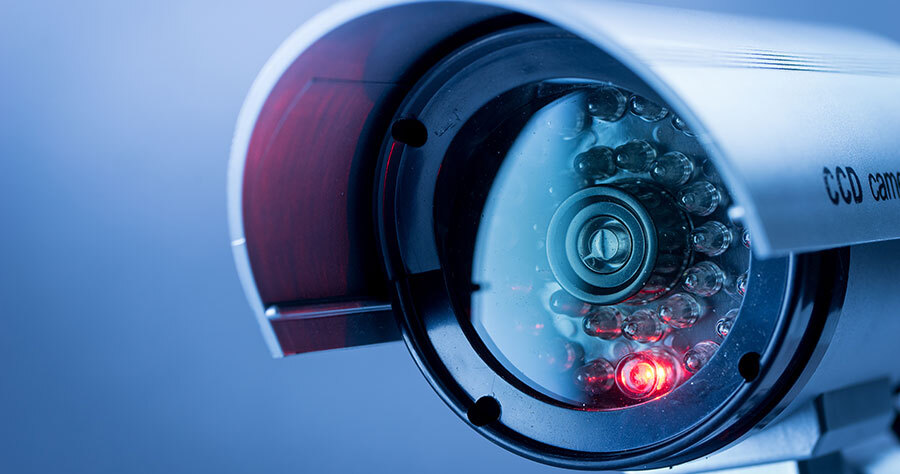Types of Security Cameras
There are many different types of security cameras available on the market today. There are bullet security cameras, infrared cameras, dome cameras, PTZ cameras, hidden cameras, IP cameras, weatherproof rated outdoor cameras, vandal-proof cameras, zoom cameras, Varifocal cameras, fixed box cameras & variations of each. With so many different types of cameras, it may be confusing to make the right choice. When it comes time to purchase the correct camera, let us guide you with your decision.
Wireless Cameras-There are different ways to set up wireless cameras. Depending on the location and size of the camera system will determine which wireless setup is best for your application.
One way is for a wireless camera to connect to your DVR through a transmitter & a receiver. The transmitter connects to the wireless cameras & the receiver connects to the DVR. Most surveillance cameras run on 2.4ghz frequency. A cordless phone if on the same frequency can cause a disturbance with the output of video for wireless cameras. Wireless internet as well can cause a disturbance. It all depends on the location of the cameras in relation to the wireless telephone & the router for your internet. The amount of metal in the walls can also cause interference with the output of the video.
Wireless cameras are more expensive than wired cameras but are cheaper to install because no wires have to be run. Depending on the distance between the wireless camera & the DVR, you may not get the best picture with a wireless camera.
Bullet Cameras- Are smaller than regular surveillance cameras. Bullet cameras are typically used for indoor applications because they do not have IR LED’s. Therefore, they do not show the best picture at night.
Infrared cameras- These cameras have IR LED's. At night the cameras LED's activate and allow the lends to seeing an image at night. Most of the IR LED cameras light up red, there are some cameras that have black ir's so it's not visible at night.
Dome Cameras- These cameras are dome-shaped & are used for indoor/outdoor applications. Dome cameras can have IR LED's & can have a varifocal or a fixed lens.
PTZ Cameras- PTZ stands for pan, tilt, zoom. These cameras are able to moved remotely live on the internet, from the DVR itself, or a PTZ Controller. A PTZ Controller looks similar to an old joystick. These cameras have the ability to be set to scan a specific area. These cameras are useful for large areas, especially when you have someone constantly monitoring the camera. If the guard sees something they can quickly zoom in on the target.
Hidden Cameras- A hidden camera is a small board camera inside of a household item. Such as a clock radio or an iPod dock. Some hidden cameras can have DVR’s inside of them, and others must be plugged into a DVR or VCR to record.
IP Cameras- Ip cameras do not connect to a DVR, they connect directly to a switch or a router. IP cameras typically start at 1.3 megapixels and can go upwards of 8 megapixels. These types of cameras offer high resolution, advanced video analytics, intelligence, and much more. IP cameras can have a POE feature.
Weatherproof Rated Cameras- There are surveillance cameras that say they are weatherproof, then there are surveillance cameras that have a weatherproof rating. A good weatherproof rating is IP65 & IP66. If it says IP66 in the information about the camera, then you know you are getting a high-quality weatherproof rating. The camera is of higher weatherproof quality when it has an IP rating, instead of buying a camera that just says weatherproof.
Vandal Proof Cameras- These cameras are made to take abuse. Vandal-proof Cameras are made from strong materials and can withstand damage that a normal surveillance camera can not. These are ideal for outdoor locations where you do not have control over. Ex. A busy street, a dangerous area, bad weather areas. The cameras are placed inside of a vandal-proof housing to keep the camera safe. Most of these are dome cameras or bullet cameras inside a larger housing. The IK rating determines the level of vandal protection. IK ratings are based on the IEC 62262 international standard, used to label the level of protection of a camera or housing itself. Two types of tests are made: the first is where a certain weight is dropped directly on the camera or housing and the second is where it is hit with a certain weight directly to the camera or housing.
Vari-focal Cameras- These cameras have the ability to manually zoom from the back or front of the camera itself. If your camera has a 2.8-12mm lens on it then you can start at a wide-angle with 2.8 mm if you want to see an entire room or parking lot scenario. When you have a 2.8mm lens you will have approximately a 75-85% field of view. You will get more area in the picture but it will seem as if you are seeing everything from a further distance. If you have it set to 12mm then something 25 ft away would seem very close, you will get a smaller angle of vision but you will have greater image detail in your picture.
Box Cameras- These cameras are typically in the shape of a box and look like traditional security cameras. They are highly customizable, with the ability to add different colored or different material of bracket. The most analog lens will fit onto a standard box camera. You can add a 2.8-12mm lens, 5-50mm lens, or whatever mm lens you need for your application. Swapping a lens on an indoor box camera that is not in an enclosure only takes about 1 minute.

